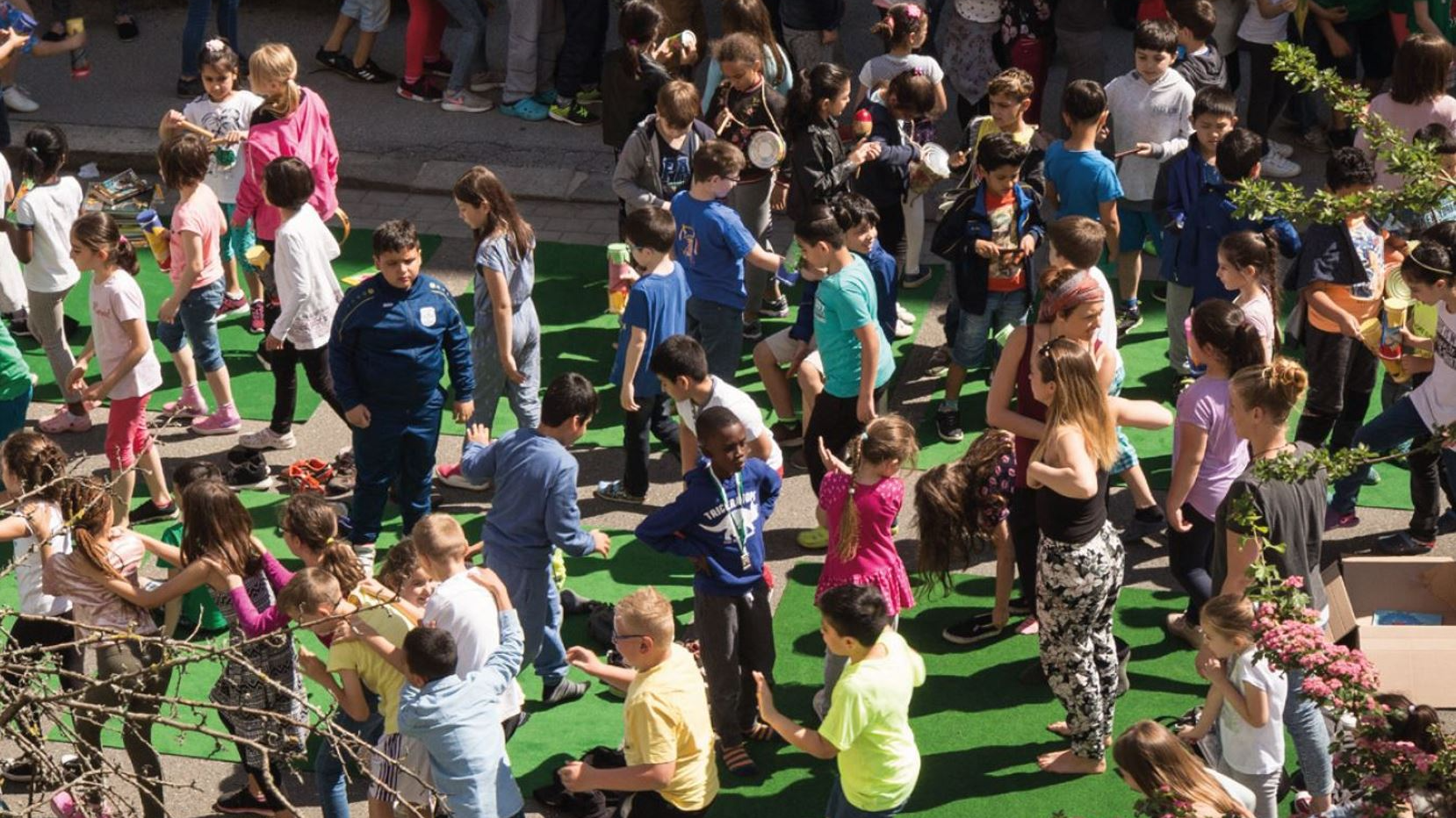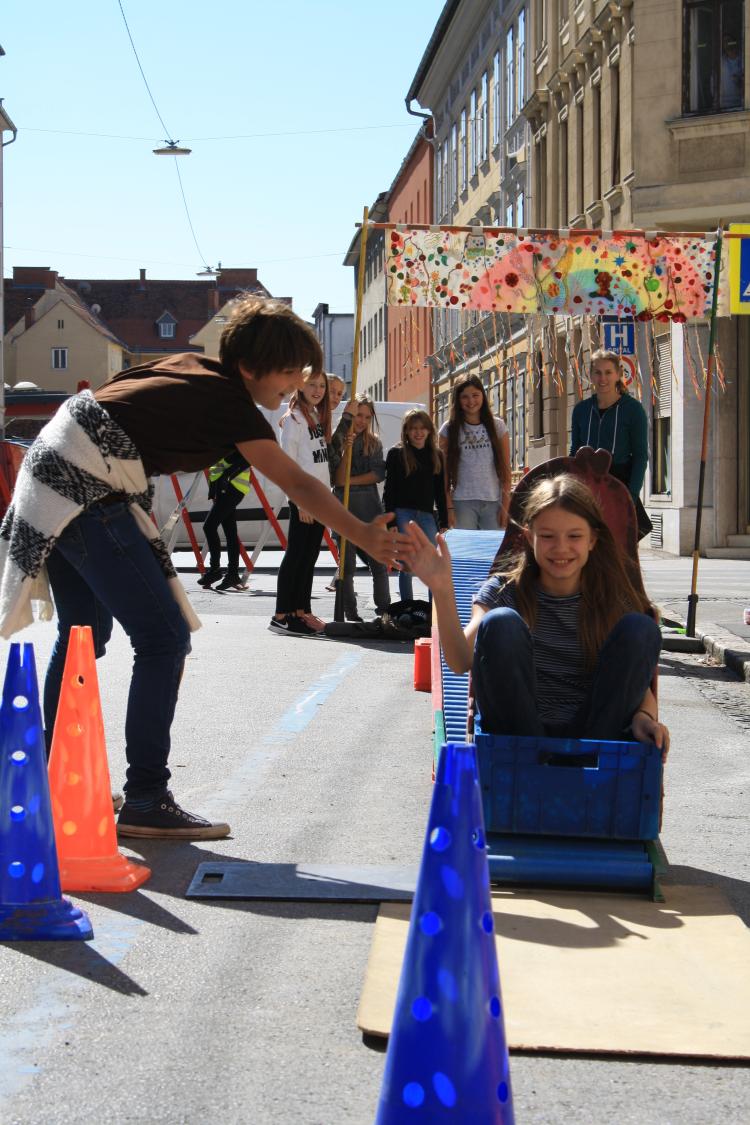Graz: Implementing 'School Living Labs'

The Challenge
In many cities, parents do not feel safe letting their children walk or cycle to school because of the traffic situation – not realising that they themselves contribute to the dangerous situation by dropping off and picking up their children by car. Graz tried to change this by converting the areas in front of three schools in the district of Lend into “Living Labs”: an area for educational purposes, as well as games and leisure activities.
The School Living Lab idea is based on the premise coined by the Danish urban planner Jan Gehl that a high-quality and sustainable neighbourhood is characterised above all by the number of children in public places (streets, squares, parks). Based on this, the schemes aim was to transform car-oriented neighbourhoods into child-friendly places. This should not only increase the quality of life, but also a change in behaviour with regard to mobility.
In the case of Graz, the central point is trying to give the children free space for lessons in the open air or for free movement. Central here is the use of the potential of the spaces in front of the schools and their conversion from parking spaces to freely usable movement areas for children.




